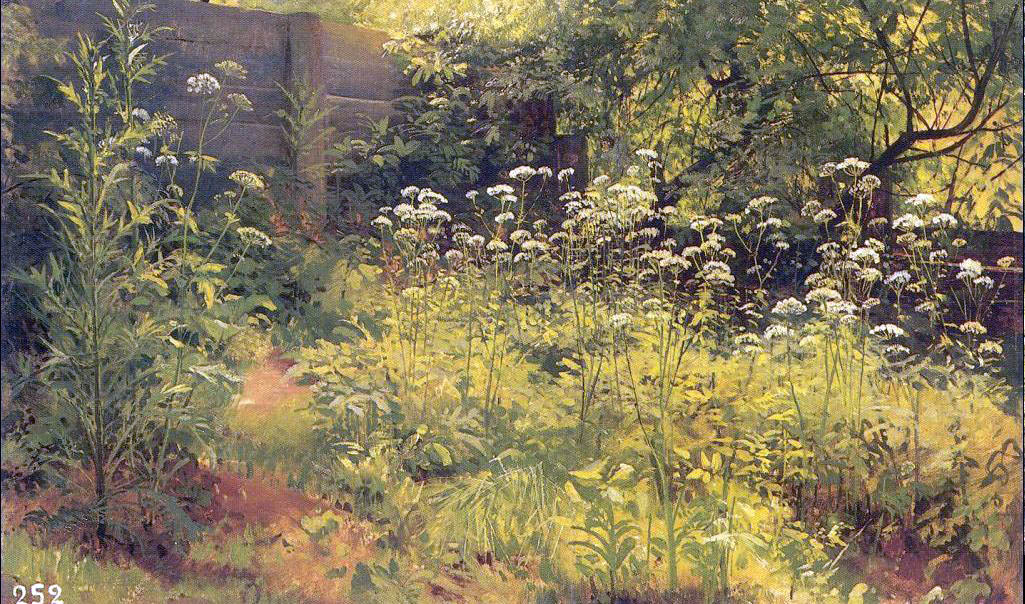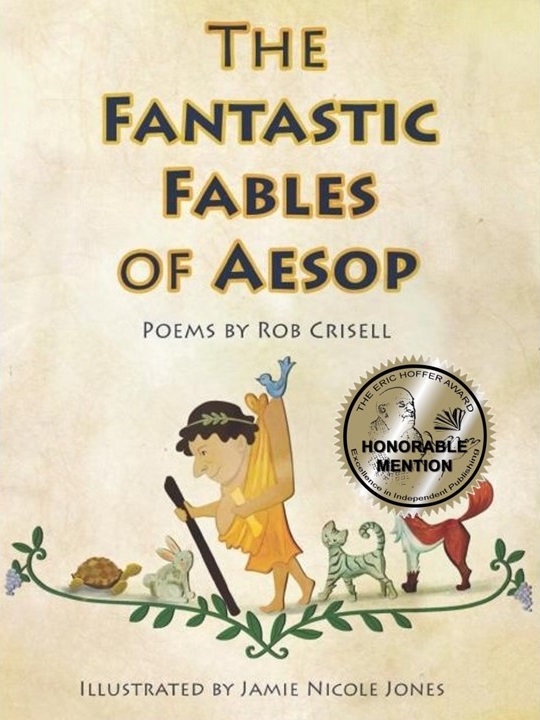By Carol Smallwood
The pantoum is a poetry form that originated in 15th century Malaysia and drifted West in the 19th century with French writer Victor Hugo, among others. While it never quite took off like the Haiku, it never fully went away either and has been steadily blossoming among English poets.
Unlike the 14-line sonnet, pantoums do not have to be a certain length. The challenge comes with the repetition of two lines from the first stanza in the following stanza. Additionally, in the traditional Pantoum form that I prefer, the first line becomes the last line and the third line becomes the third from last. The payoff of a well executed pantoum is a picture-like poem that seems to dance in circles outside the boundaries of time.
This is the format I use:
Stanza 1:
4 lines, ABAB rhyme scheme
Stanza 2:
Line 5 (repeat of line 2 in stanza 1)
Line 6 (new line)
Line 7 (repeat of line 4 in stanza 1)
Line 8 (new line)
Stanza 3:
Last Stanza (This is the format for the last stanza regardless of how many preceding stanzas exist):
Line 9 (line 2 of the previous stanza)
Line 10 (line 3 of the first stanza)
Line 11 (line 4 of the previous stanza)
Line 12 (line 1 of the first stanza)
As with other formal poems, one must not let the form drive the poem and select topics carefully: like when Goldilocks is looking for a bed in three bears’ house, it must be just right. Other types of pantoums can be found here.
My example pantoum, “Near the Porch Rails,” began when I noticed a red weed growing I hadn’t seen before. Curious, I looked at it closely, and smiled as it seemed like beads and tried to find the name of it but couldn’t online. However, names of others were delightful and decided to write about them as summer progressed.
Near the Porch Rails
New weeds bring surprise—like one with red bead-like leaves this spring
nameless yet; weeds were often used by ancestors for medicine or dye—
secure in ground in sun near the porch rails, green life brings a new zing.
Nearby, white delicate Queen Anne’s Lace (Wild Carrot), stretches to sky.
Nameless yet, weeds were often used by ancestors for medicine or dye;
Calling one, Heal All, is better than Prunella vulgaris, its scientific name.
Nearby, white delicate Queen Anne’s Lace (Wild Carrot) stretches to sky.
Even if families grow next to one another, they’re never exactly the same.
Calling one, Heal All is better than Prunella vulgaris, its scientific name;
Mouseear Chickweed, Bull Thistle, Shepherd’s Purse are common weeds.
Even if families grow next to one another, they’re never exactly the same—
spring arrivals from year to year are capable of sowing many seeds.
Mouseear Chickweed, Bull Thistle, Shepherd’s Purse are common weeds;
secure in ground in sun near the porch rails, green life brings a new zing;
spring arrivals from year to year are capable of sowing many seeds.
New weeds bring surprise—like one with red bead-like leaves this spring.
Paste your pantoums in the comments sections below.
One of Carol Smallwood pantoum’s just won an Honorable Mention in the Thirteenth Annual International Ultra-Short Competition sponsored by The Binnacle at The University of Maine at Machias, 2016. Her over four dozen books include Women on Poetry: Writing, Revising, Publishing and Teaching, which is on Poets & Writers Magazine list of Best Books for Writers. Water, Earth, Air, Fire, and Picket Fences is a 2014 collection from Lamar University Press; Divining the Prime Meridian, is a 2015 collection from WordTech Editions.















Carol,
Well done! I too love to explore, and use essays like this to teach others how to do the same. My series of how-to essays on classical forms are quite popular with my poetry groups.
The pantoum, due to its strong cyclic repetition, suits many subjects, and I loved the way you spun a trip through the weeds into a nice circular web. Nothing thrills me quite like seeing different themes explored using classic metering and form.
I too prefer to create a crown from my pantoums, and use the reverse of lines 1 & 3 from the first stanza, as 2 & 4 in the final one. I find that this refrain style reinforces that opening line and provides the best closure.
I have written several pantoums in this style as part of my new classic poetry collection, and would love to share and get your opinion on a couple. These two are both written in iambic pentameter, since the subject matter in both cases was enhanced by the soft edges that iambs give, and the cadence falls nicely into a repetitive form.
Clouds
———-
Clouds drift across the peaceful azure sky.
As I sit quietly under this tree,
I think of life’s big questions and I sigh.
I wonder if someday I’ll truly see.
As I sit quietly under this tree,
the sun is warm shining upon my face.
I wonder if someday I’ll truly see
the beauty hidden deep inside this place .
The sun is warm shining upon my face.
I stretch out, gladly soaking up the light,
the beauty hidden deep inside this place,
as arms of golden warmth embrace me tight.
I stretch out, gladly soaking up the light.
I think of life’s big questions and I sigh;
As arms of golden warmth embrace me tight,
clouds drift across the peaceful azure sky.
–dustygrein
First Kiss
————-
I floated home on clouds the day we met;
that first great kiss changed everything and more.
My life was full of “Haven’t done that yet,”
(I’d never tasted someone’s tongue before).
That first great kiss changed everything and more;
you taught me what it was to fall in love.
I’d never tasted someone’s tongue before,
but kissing, for you, just wasn’t enough.
You taught me what it was to fall in love.
My virgin hands were unsure what to do,
but kissing, for you, just wasn’t enough.
You made me want to learn the rest from you.
My virgin hands were unsure what to do –
my life was full of “Haven’t done that yet.”
You made me want to learn the rest from you;
I floated home on clouds the day we met.
–dustygrein
Thank you for asking my opinion, Dusty. I admire your skill with meter which I rather not tackle but hopefully will. You sounded like you enjoyed writing them and hope you will continue and encouraged me to try meter again.
I could not but recall my first kiss – the blissfulness of it – but sometimes wish I’d never bothered with “more”
These are lovely and well done dusty. To me, the way you know a pantoum is successful? You don’t notice the repetition while reading it. VERY. Well . Done.
Thank you for the painting to accompany the poem! Classical art and formal poetry go well together and deserve more followers.
I am not a poet but these pantoums are delightful and so much fun to find the “lines” that are repeated in a subsequent verse. Thank you for introducing me to a form of poetry that I can enjoy.
Thank you, Betty, for reading the pantoum. I bet you could easily write one and enjoy, share the results!
Carol, Your attention to history and structure in this piece is admirable. Thanks for sharing the interesting morphology and architecture of this unusual and very structured formal poetry. Interesting reading and food for future poems! Chris Swanberg
Thank you, Chris. When I first looked at the format I never thought I’d try one but bit by bit it fall into place and now it is my favorite kind because it offers surprise at the end and not too much repetition of lines. I’ve run across many that are written using different rules than those I gave, modern versions perhaps you could say. I started with villanelles but now pantoums are the most fun for me.
Carol, I liked your description of the pantoum as being outside the boundaries of time. Your example, “Near the Porch Rails,” so well portrays the pantoum’s circular “dance.” Your listing of Bull Thistle after Mouseear made me smile.
Thanks for your clear explanation of the pantoum’s form.
(Sorry, to tease out a pantoum from me in response would put me so far outside the boundaries of time, there’d be no return.)
Thank you, Carole. You caught the essential magic of the pantoum when you mentioned boundaries of time. Yes, I used the names of the weeds you mention because they were funny and the scientific names made them sound so serious. I’ve had to struggle getting the last stanza to work and ended up tossing the poems out; sometimes adding another stanza worked.
Carol, thank you for taking the time to write this! Pantoums are new to me. What an interesting form. Yes I love the way it circles back around and finishes neatly at its beginning. Dusty Grein, I especially love your “Clouds”.
Thank you Lorna. ‘Clouds’ was actually the first pantoum I ever wrote, and is still one of my favorites as well. It almost became the lead off poem in my forthcoming collection, but was over-ridden by a terza rima that touched me deeply when I wrote it. 🙂
Thank you, Lorna, for reading and sending a comment. Yes, the circling back round is the challenging thing as often I’ve had to either add, remove a stanza or two or toss the poem out when it made no sense.
joel sunker. i pantoum
me good good pantoum
The poems are so beautiful , Carol and Dusty. I applaud you both for the interesting pieces of art. This line of poetry is new to me. I love it already. I’m gonna learn it right away.
Wings to Fly
God gave him wings to fly
The bird wouldn’t leave the next
For he was afraid he’d die
Sure he would fail the test
The bird wouldn’t leave the nest
Up in the tree he stayed
Sure he would fail the test
Finding comfort in the shade
Up in the tree he stayed
Watching the others leap
Finding comfort in the shade
Afraid of the fate he’d meet
Watching the others leap
He didn’t know if he could fly
Afraid of the fate he’d meet
Beyond in the blue summer sky
He didn’t know if he could fly
Only in God could he trust
Beyond in the blue summer sky
Spreading his wings was a must
Only in God could he trust
Yet none of the others came back
Spreading his wings was a must
Against him the odds were stacked
Yet none of the others came back
Spurred by hunger, without hope
Against him the odds were stacked
He was at the end of his rope
Spurred by hunger, without hope
He flung himself out of the nest
He was at the end of his rope
All he could do was his best
He beat the air in frantic pace
For he was afraid he’d die
Then in joy and with grace
God game him wings to fly.
Salutations to One and to All referred to on the above pages.
Peace and Health.
First I want to congratulate the Author of “How to Write a Pantoum” Poet Carol Smallwood for the outstanding Essay on the Pantoum; and thank her for keeping the Lamp of Poetry on.
I did enjoy the reading of the postings above, but the lack of punctuation of the last one made me decide to comment on its negativity — once there is no excuse for lack of punctuation in any language written with the Latin Alphabet.
The Pantoum presented by Poet Beverley Turnley (January 22, 2021) has the foundation for a magnificent poetic opus if the author decides to apply — a general revision to this — already poetic Star.
A poetic work is made of stanza, (s) and stanza is made of verse lines, which demand grammar in its general areas; for it is a must in Poetry and any literary work. A Poet will use “Poetic license” to improve the rhythm and the sound of verse lines, never to become a “Linguistic iconoclast”.
In reverent appreciation.
Under the Light of Mother,
Andre Emmanuel Bendavi ben-YEHU
The sky unfolds with hues of dusk,
Soft whispers ride the cooling air.
A quiet world, both warm and hushed,
Embraced by twilight’s gentle care.
Soft whispers ride the cooling air,
The sun dips low, the stars awake.
Embraced by twilight’s gentle care,
The earth in stillness starts to quake.
The sun dips low, the stars awake,
Each glowing pin in endless night.
The earth in stillness starts to quake,
With secrets hidden out of sight.
Each glowing pin in endless night,
A quiet world, both warm and hushed.
With secrets hidden out of sight,
The sky unfolds with hues of dusk.
Pyne pod flavors
Ignorant Preacher
He speaks because he does not know,
his truths too smooth, untouched by doubt—
the wise men whisper very slow,
for certainty has been cast out.
His truths too smooth, untouched by doubt,
he holds them high like holy flame.
For certainty has been cast out,
and he still dares to stake a claim.
He holds them high like holy flame,
not knowing fire burns those near.
And he still dares to stake a claim—
the weight of speech is never clear.
Not knowing fire burns those near,
the wise men whisper very slow.
The weight of speech is never clear.
He speaks because he does not know.
Preach again, voice of certainty,
when all you know is back to you.
When you return yourself to jollity,
knowing the way of the preacher blue.